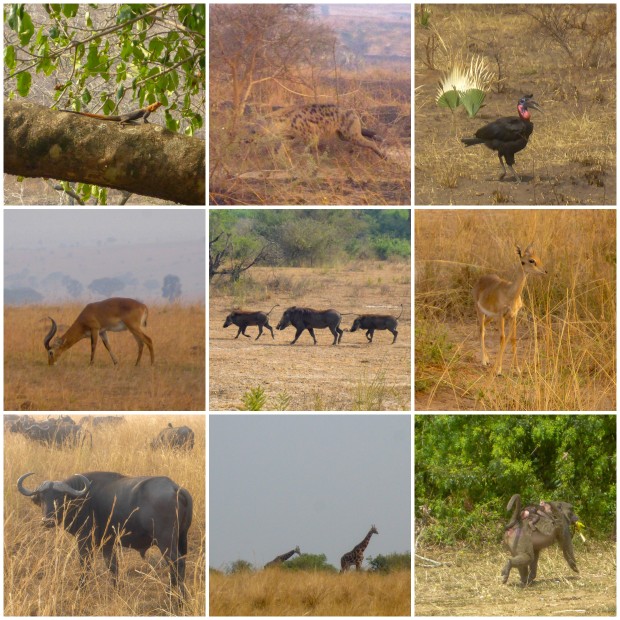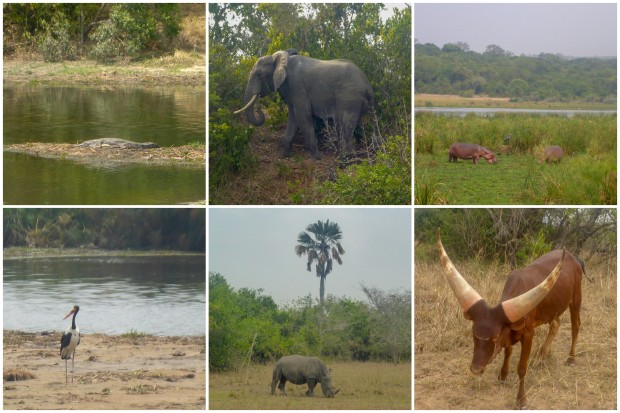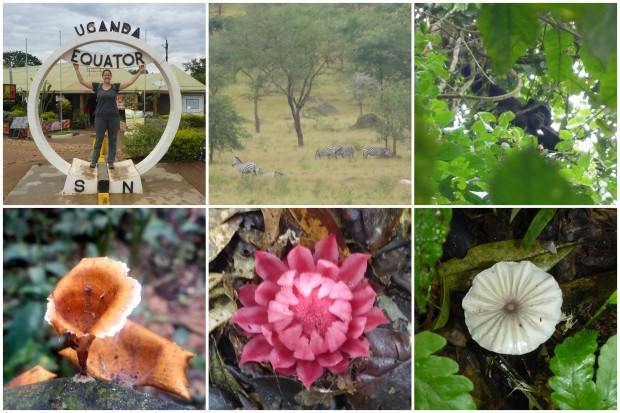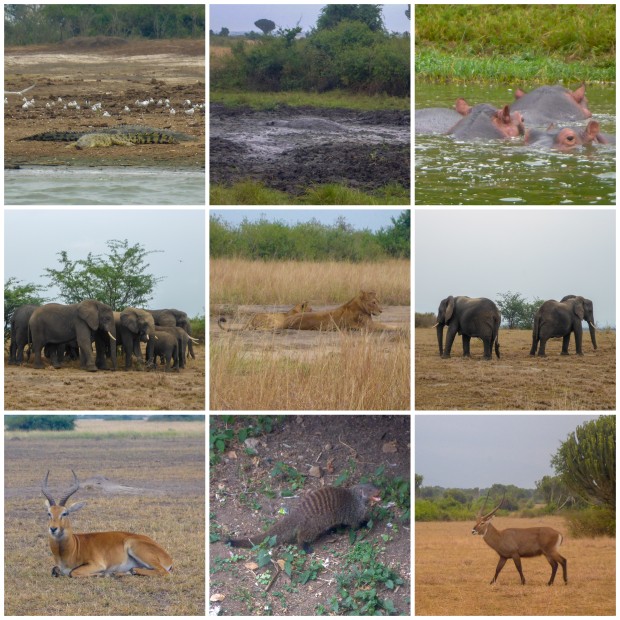When I lived in Zimbabwe almost twenty years ago, several people told me that if I liked it there, I should see Uganda. There’s a lot of similarities: everything is lush and verdant, people are overwhelmingly friendly, tea with milk (aka British style) is available everywhere, driving is on the left side of the road, and ginger beer is plentiful. I spent my first week here living the safari life. Although I’ve been a few times before, nature continues to awe and inspire me.
Murchison Falls
The remnants of British colonization are everywhere in Uganda, including in the name of this epic waterfall. A couple of British explorers dedicated the site to the then President of the Royal Geographic Society, Sir Roderick Murchison. It is the most powerful waterfall in the world, mostly because of the narrow entrance at the top that is only 7 metres (23 ft) wide. Over 300 cubic meters of water flow every second (11,000 ft³/s) through that gap. Basically, it’s a lot of water moving through a very small space. Murchison Falls is part of the bigger Nile river system. It’s on a tributary of the White Nile that eventually joins with the Blue Nile (coming from Ethiopia) in Khartoum, Sudan to form the Nile River that empties into the Mediterranean Sea in Cairo.
Murchison Falls National Park is one of the bigger parks in Uganda and has one of the largest assortment of animals because of its size. Although members of the antelope family tend to get old after you see them many times, I really enjoyed seeing the Ugandan kob for the first time and oribis may be the cutest antelope of all time.

top (l to r): red-headed Agama lizard, spotted hyena, Abyssinian ground hornbill
middle (l to r): Ugandan kob, warthog family, oribi
bottom (l to r): African buffalo, Rothchild’s giraffes, olive baboon mama with baby
We were also able to take a boat trip up the Nile to see the animals that live along the river. Watching the huge elephant walk along the edge of the hill was quite impressive. Due to continued threats of poaching, all of the rhinoceroses in Uganda live in the Ziwa Rhino Sanctuary which continues to guard and protect the animals as they reproduce so there are enough to repopulate the national parks. The Ankole cow we saw on the side of the road, and this one has some of the craziest horns I’ve ever seen.

top (l to r): Nile crocodile, African elephant, common hippopotami
bottom (l to r): saddle-billed stork, white rhinoceros, Ankole cow
Kalinzu National Forest
On the way to Queen Elizabeth National Park, we stopped a few times to enjoy some sights along the way, including an equator marker (flashbacks to Ecuador). We also saw some zebras along the road before we stopped to track chimpanzees in Kalinzu National Forest. This is the first time I have ever seen chimpanzees in the wild. We were only able to see a mama chimpanzee and her baby up in the tree, but it was still pretty exhilarating. After about an hour of staring up at an odd angle, we took a walk through the forest and I found all kinds of interesting things growing on the ground.

top (l to r): equator marker, zebras near Lake Mburo, mama chimpanzee
bottom: various finds on the forest floor
Queen Elizabeth National Park
More animals! Notice the two Nile crocodiles in the photo, the lighter colored one is a juvenile and the darker gray one is an adult. The solitary hippo in the mud has probably gotten kicked out of the main group in the river from losing a fight with the dominant male. Since it can’t be in the river anymore, it has to find another way to cool off its massive body.

top (l to r): Nile crocodile (female and male), hippo wallowing in mud, hippos
middle (l to r): group of elephants, lions hanging out, symmetrical elephants
bottom (l to r): Uganda kob, banded mongoose, waterbuck
The Kazinga Channel is a 32-km long waterway that connects two giant lakes, Lake Edward and Lake George (named after British princes from back in the day). Colonialism strikes once again. The channel is full of birds, crocodiles, and hippos that are drawn to its shallow waters. There is one local community that is still allowed to fish in the area that mostly catches tilapia and catfish. The boat ride included a huge array of birds birds and more birds.

top (l to r): African spoonbill, saddle-billed stork, yellow-billed stork with Nile crocodile
middle (l to r): sacred ibis, African fish eagle, heron
bottom (l to r): great egret, yellow-billed stork, ?
Katwe
On the way through the park, we also stopped at a salt production spot in Katwe. The harvest the salt in two ways. The first way is to create salt ponds with irrigation channels connected to Lake Katwe that is the source of the salt. From there, the water evaporates and women (only women) scrape away the salt that has accumulated at the bottom of the pond. This is tough, physical work made even tougher by the fact that the constant exposure to salt can cause skin issues and dehydration. They are paid very little, but this is one way that single women in rural areas can support themselves. Men do work outside of the ponds once the women have removed it to create large piles of salt.
The other way that salt is harvested is directly from the lake itself. Men (only men) go into the lake and using tools break up the bottom of the lake which has a crust of salt on it. From there, they float the pieces of salt back to the shore where they are collected in piles of 100 kg to be sold. The men have to wear condoms to protect their genitals while they are working in the salty lake.






What an interesting fact about the men wearing condoms to work in the salty lake!
I hope you’re having a grand time still. Certainly looks like it!
LikeLike